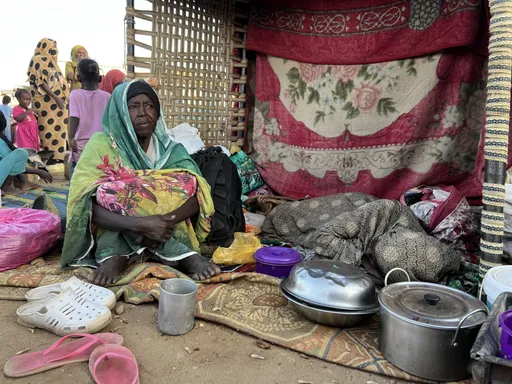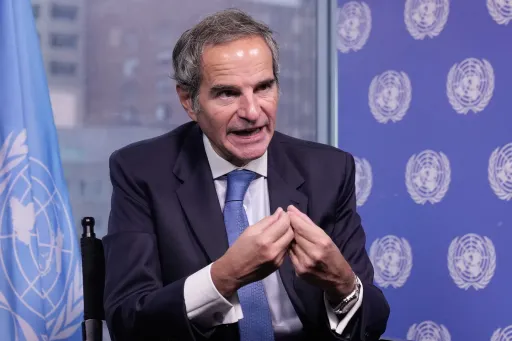By Gift Dumedah
The year 2024 is here and the number one resolution for Africa should be to stop the deaths and injuries on our roads, renew the commitment to Vision Zero and accelerate the Safe System Approach in Africa.
Vision Zero is a strategy to end traffic fatalities and severe injuries as well as ensure safe and equitable transport for all.
Boosting this strategy in Africa will mean saving about 27 persons for every 100,000 people; and about 7 percent of the annual Gross Domestic Product (GDP) for most national economies in the continent.
These estimates do not include the severe social and psychological impacts suffered by individuals and families.
For the latest period from January to October 2023, 3,609 fatalities were reported in Kenya, and 1,839 fatalities and 12,678 injuries in Ghana.
According to the World Bank Group, Nigeria, Ethiopia, South Africa, and Sudan are known to account for half of the road fatalities in sub-Saharan Africa.
Nigeria has the highest rate of road fatality of about 52.4 per 100,000 people of any country globally, followed by Mozambique being the second highest in Africa with a rate of about 46.7 per 100,000 persons.
Shared responsibilities
It is widely recognised that Vision Zero – the commitment for no fatalities or serious injuries in our roadway system – is achievable because road traffic crashes are preventable.
According to the World Health Organization (WHO) 2023 road safety status report, road traffic fatalities for the period of 2010 to 2021 are decreasing in every continent except in Africa that experienced an overall increase of 17% despite having the lowest number of vehicles and roadways.
It is recognised that the majority of vehicles are often of lower quality, tied with the political economy of imported vehicles in Africa that rarely meet safety and environmental standards.
The report shows that globally road crash deaths are falling where major gains are made in countries that adopt the safe system approach to road safety.
The safe system approach emphasises that safety is a shared responsibility between road users, road managers, designers, builders, maintainers of the road system, and post-crash care providers.
It uses five key principles emphasising that: death and injuries are unacceptable, people make mistakes, people are vulnerable, safety is proactive and not reactive, and that redundancy is crucial to provide layers of safety.
By focusing on these principles and elements, the safe system approach aims to create a safer road environment and reduce the number of road traffic crashes, fatalities, and injuries.
Error-forgiving design
Aside from its results-oriented perspective, the safe system approach is comprehensive with unique features.
It is human centered, focusing on the safety of road users by making changes to vehicle usage and design of roadways while addressing and accepting the limitations of human behaviour.
The safe system approach adopts a system-wide perspective by addressing the systems, policies, and physical environment, including road design, vehicle design, and speed management.
The approach uses an error-forgiving design by emphasising that the transportation system should be designed and operated to minimise harm, while accepting that road users make mistakes and sometimes bad decisions.
That is, the human body has physical limits for tolerating road traffic crashes before death or serious injury occurs.
Deadlier than diseases
As a system-wide method, the safe system approach is proactive by addressing safety issues relating to infrastructure, human behaviour, responsible oversight of the vehicle and transportation industry, and emergency response.
Given its proven results, established global adoption and effectiveness, why is the safe system approach proving elusive for many countries in Africa?
Fundamentally, there are pertinent cross-cutting and recurrent challenges facing the adoption of safe system approach in Africa.
A leading issue among them is that road safety is not prioritised enough – it is not considered as a real top problem. This is evident in the lack of funding and resources allocated to safety promotion and injury prevention.
For example, the African Road Safety Action Plan encourages African countries to allocate at least 10% of road infrastructure investment to road safety.
While it is difficult to verify the actual national allocations, there are still challenges relating to limited resources, competing priorities, and political commitment.
Road injury is widely considered as a top cause of death in Africa just behind malaria and tuberculosis according to several WHO reports.
Yet, it does not receive adequate investment and financial backing, proper infrastructure, or sufficient research and development activities.
Action missing
However, there are opportunities in 2024 to make real progress on safety promotion and injury prevention through the safe system approach in Africa.
The vast majority of transport and mobility infrastructure are still being built in Africa, with the prospect of integrating safety standards directly.
This will not happen automatically or without firm commitment and deliberate efforts. Safety of human life must be prioritised on our roadways. The commitment to vision zero in saving lives on our roads is achievable through the safe system approach.
However, the missing item is action on all fronts including road users, policy makers, designers, builders, maintainers of the road system, and post-crash care providers.
For this one vision, all stakeholders need to rise to their tasks to achieve a dedicated system-wide implementation across the systems, policies, and physical environment, including road design, vehicle design, and speed management.
Overall, the desire is a safe transport system with no fatalities and injuries serving all road users in Africa.
The author, Gift Dumedah, is a Ghanaian academic whose research focuses on transport, access, and mobility in Africa.
Disclaimer: The views expressed by the author do not necessarily reflect the opinions, viewpoints and editorial policies of TRT Afrika.
➤Click here to follow our WhatsApp channel for more stories.




















